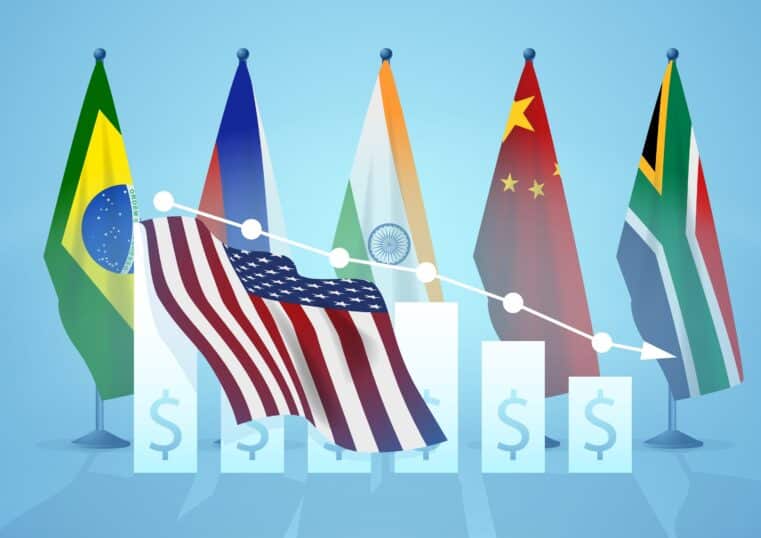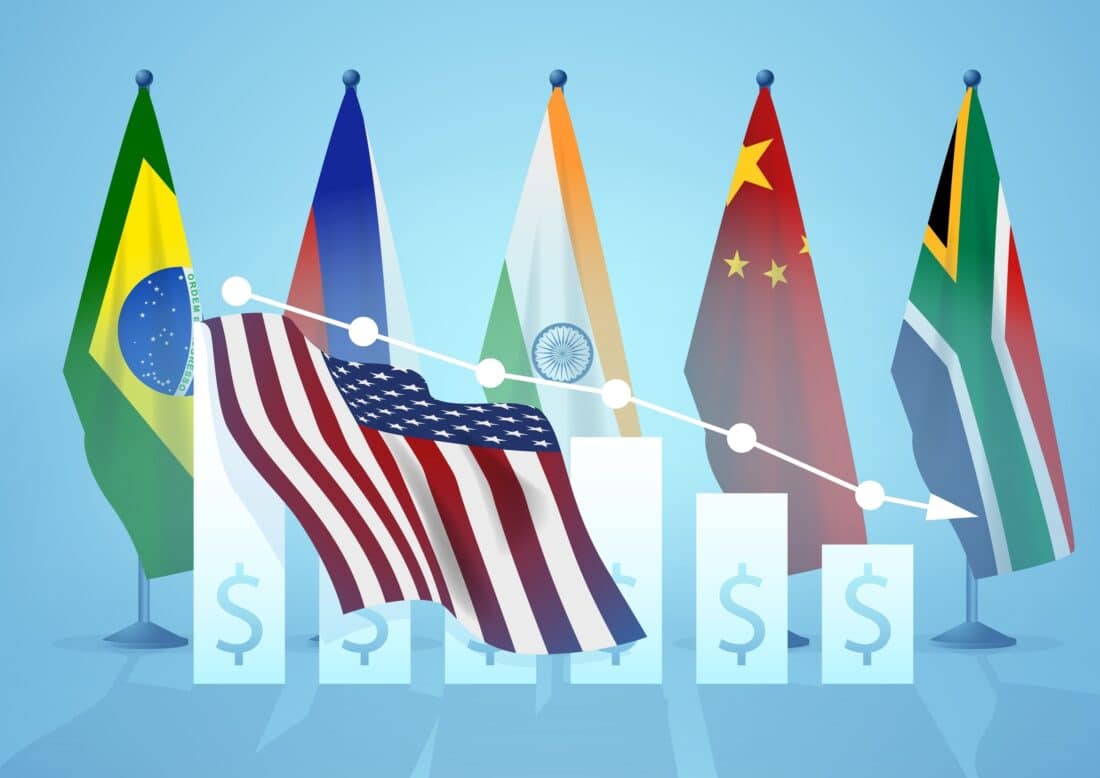
The Dow Peaked at 14,000 Before the Crash--It’s Now at 24,000
If you look at what’s happening with the financial markets from both an objective and historical perspective, you may come to realize that the stock markets are at absurd levels.
Do you remember how the Dow hit a peak at 14,000 just before the last stock market crash? Certainly, market prices were over-inflated at those levels. And the Dow consequently tumbled 7,000 points prior to recovering.
Now we’re at a new and even higher threshold: we just passed Dow 24,000. This may lead you to think that our economy is undergoing the greatest expansion in the history of the U.S. Unfortunately, this is not the case: our economy has grown only 1.33% in the last ten years!
Our current bull market--one of the greatest bull markets we’ve seen--reflects a GDP equivalent to that of 1933 Depression-era growth!
The correlation between these two figures is perplexing; it just doesn’t make sense.
The bull market started with the 2009 recovery. Financial markets were at first lifted by massive corporate stock repurchases funded by low interest rates (QE). In the last 3 quarters of 2017, retail investors finally got out of the sidelines and put cash to work in the markets--almost nine years from when the bull market first started; very late in the game.
What is certain, considering the high market valuations and low GDP figures, is that we are in a bubble--one that may end soon.
Every bubble ends disastrously. Our current situation is no different than any we’ve seen in the past.
A few weeks ago, the Dow rallied, indicating a healthy market. Yet the Nasdaq--and most big tech stocks--painted a very different picture. Here’s a quote from CNN:
“Meanwhile, big tech stocks — which have propelled the market higher all year — were tanking. The Nasdaq fell more than 1%, led by big drops in Google (GOOGL, Tech30) owner Alphabet, Amazon (AMZN, Tech30), Apple (AAPL, Tech30), Facebook (FB, Tech30) and Netflix (NFLX, Tech30).
Momentum darlings Nvidia (NVDA, Tech30) and PayPal (PYPL, Tech30) and red hot gaming stocks Electronic Arts (EA, Tech30) and Activision Blizzard (ATVI, Tech30) plunged too. They have been some of the market’s top stocks throughout most of 2017.”
We all know that no market can go up in a straight line forever (unless you’re investing in a Bernie Madoff fund). To assume that what comes up must come down is common sense.
Although everyone knows this, many wait for their preferred “market experts” to remind them of the immutability of this natural law. Perhaps some might listen to Goldman Sachs’ warning:
“It has seldom been the case that equities, bonds and credit have been similarly expensive at the same time, only in the Roaring ’20s and the Golden ’50s,” Goldman Sachs International strategists including Christian Mueller-Glissman wrote in a note this week. “All good things must come to an end” and “there will be a bear market, eventually” they said.
As central banks cut back their quantitative easing, pushing up the premiums investors demand to hold longer-dated bonds, returns are “likely to be lower across assets” over the medium term, the analysts said. A second, less likely, scenario would involve “fast pain.” Stock and bond valuations would both get hit, with the mix depending on whether the trigger involved a negative growth shock, or a growth shock alongside an inflation pick-up.”
For every stock market party, the punch bowl eventually gets taken away.
It seems that every time people suspect an end to a bull market, there’s a debate played out in financial media whether such an end will come in the form of a “soft” or “hard” landing.
We all wish for a soft landing. But rarely has this happened. Can you recount a time when a massive bull market ended in such a way that allowed every investor to get out in a timely manner? The main point is that there’s no reason to believe the markets will bestow upon us such a gentle fate.
But don’t just take our word for it. A number of prominent financial experts and economists are thinking along the same lines:
Vanguard’s chief economist Joe Davis said investors need to be prepared for a significant downturn in the stock market, which is now at a 70 percent chance of crashing. That chance is significantly higher than it has been over the past 60 years.
The economist added, “It’s unreasonable to expect rates of returns, which exceeded our own bullish forecast from 2010, to continue.”
That all market bubbles end in a crash is nothing new. The tricky thing is that nobody can predict the exact point at which a bubble might burst. So what do we do? We look at indicators to get a general forecast. And right now, a number of indicators, all of which scream “danger,” are keeping us on high alert.
For instance, “margin debt” is one such indicator, as Wolf Richter writes:
This chart shows margin debt (red line, left scale) and the S&P 500 (blue line, right scale), both adjusted for inflation to tune out the effects of the dwindling value of the dollar over the decades (chart by Advisor Perspectives):
Stock market leverage is the big accelerator on the way up. Leverage supplies liquidity that has been freshly created by the lender. This isn’t money moving from one asset to another. This is money that is being created to be plowed into stocks. And when stocks sink, leverage becomes the big accelerator on the way down.
If you look at every major bull market in history, you’ll notice one characteristic that remains consistent: the speed and depth of a falling market is much greater than any instance of a market rising. Hence the term “falling knife.”
When our current market goes down, its velocity may be exceedingly fierce.
Bear in mind that our current bull market was based on a faulty premise: the illusion of economic growth fueled by the artificial creation of trillions of dollars.
The central banks printed money out of thin air and plugged them into the financial markets. As you probably experienced on a day-to-day basis, asset prices have become inflated.
Cheap debt via low interest rates helped corporations repurchase their stocks; lifting their equities prices across the board, regardless of whether or not actual revenues matched the high stock valuations.
Now central banks across the globe have simultaneously turned off the spigot of cheap money.
If anything, this event should serve as a blaring signal that equities are about to go south. Former Fed chief Janet Yellen herself expressed her worries of creating “a boom-bust condition in the economy,” yet she decided that a gradual raising of rates would be the best solution.
Most of us did not expect our current stock market bubble to reach such massive proportions. Although we are way overdue for a correction, the party seemingly refuses to end.
But all parties come to an end. And when it does, the pain and devastation it will wreak on our financial system will be as massive as the recovery that preceded it: it will be like nothing we’ve seen before.
Protect yourself with the only assets capable of withstanding and thriving on economic collapse: buy precious metals.













